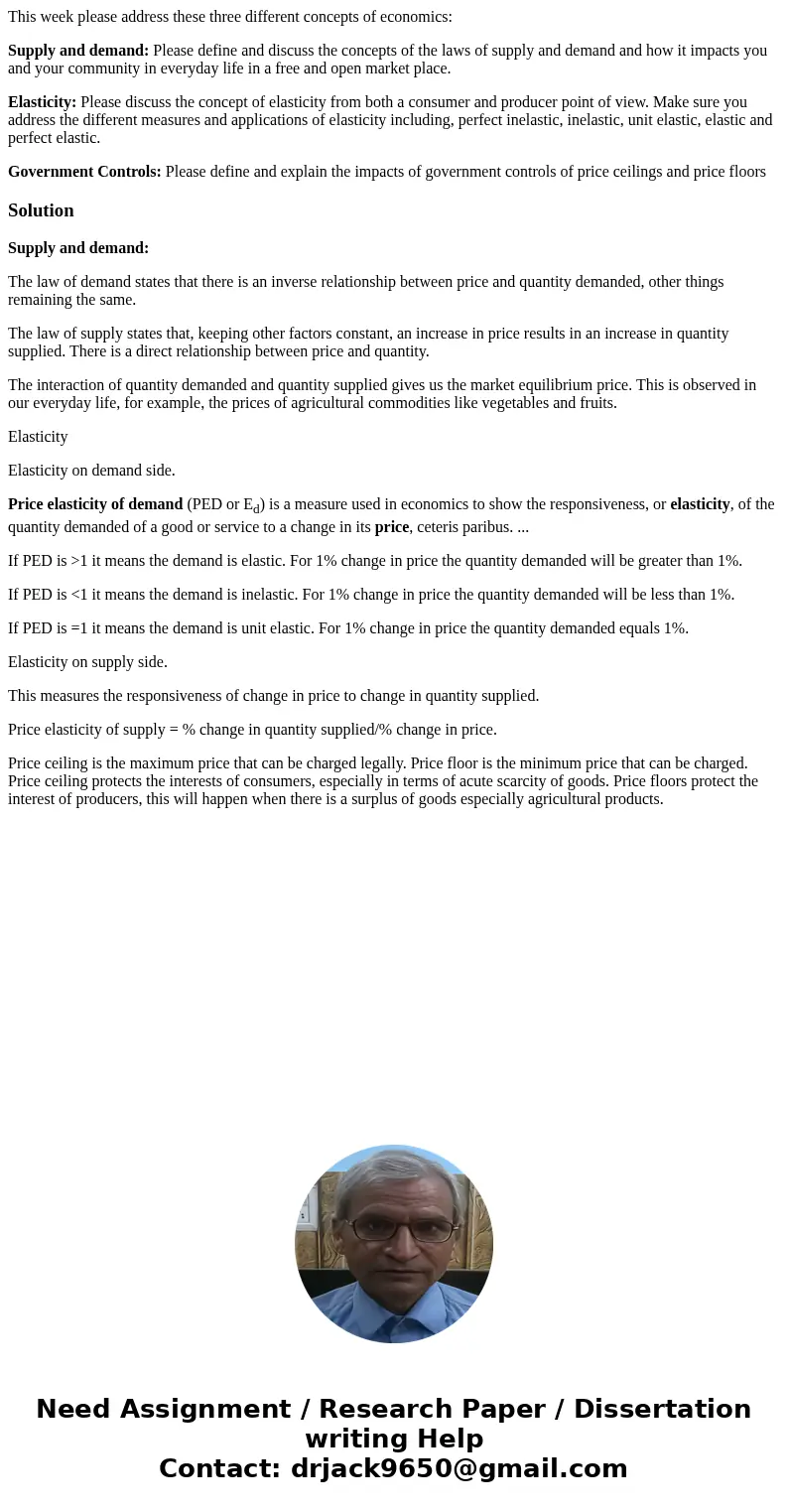This week please address these three different concepts of e
This week please address these three different concepts of economics:
Supply and demand: Please define and discuss the concepts of the laws of supply and demand and how it impacts you and your community in everyday life in a free and open market place.
Elasticity: Please discuss the concept of elasticity from both a consumer and producer point of view. Make sure you address the different measures and applications of elasticity including, perfect inelastic, inelastic, unit elastic, elastic and perfect elastic.
Government Controls: Please define and explain the impacts of government controls of price ceilings and price floors
Solution
Supply and demand:
The law of demand states that there is an inverse relationship between price and quantity demanded, other things remaining the same.
The law of supply states that, keeping other factors constant, an increase in price results in an increase in quantity supplied. There is a direct relationship between price and quantity.
The interaction of quantity demanded and quantity supplied gives us the market equilibrium price. This is observed in our everyday life, for example, the prices of agricultural commodities like vegetables and fruits.
Elasticity
Elasticity on demand side.
Price elasticity of demand (PED or Ed) is a measure used in economics to show the responsiveness, or elasticity, of the quantity demanded of a good or service to a change in its price, ceteris paribus. ...
If PED is >1 it means the demand is elastic. For 1% change in price the quantity demanded will be greater than 1%.
If PED is <1 it means the demand is inelastic. For 1% change in price the quantity demanded will be less than 1%.
If PED is =1 it means the demand is unit elastic. For 1% change in price the quantity demanded equals 1%.
Elasticity on supply side.
This measures the responsiveness of change in price to change in quantity supplied.
Price elasticity of supply = % change in quantity supplied/% change in price.
Price ceiling is the maximum price that can be charged legally. Price floor is the minimum price that can be charged. Price ceiling protects the interests of consumers, especially in terms of acute scarcity of goods. Price floors protect the interest of producers, this will happen when there is a surplus of goods especially agricultural products.

 Homework Sourse
Homework Sourse